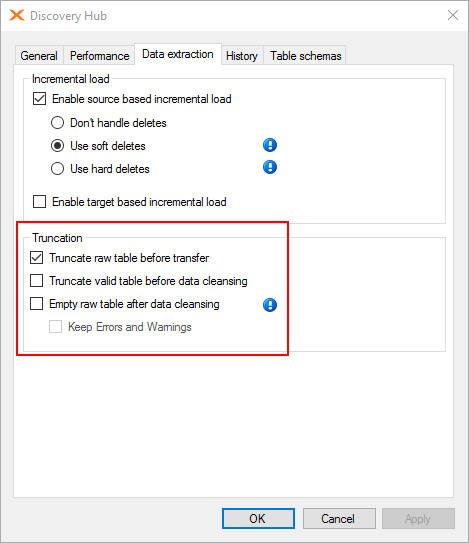Hi guys,
Can someone elaborate the different options of table truncation? I can't really find it in the help or e-learning.
We have set up an incremental load on a large table in the ODX, initially in simple mode. We found that the data after deployment & execution exists in the valid table and in the raw table, occupying twice the available storage of the original table size.
We then disabled simple mode and checked the truncate raw table before transfer. I now still see some records (not all of them) in the raw table. I guess I'll have to check "Empty raw table after data cleansing" to completely empty the raw table after reloading, but I can't really grasp the difference between these options.

Best answer by wynkoop
View original



